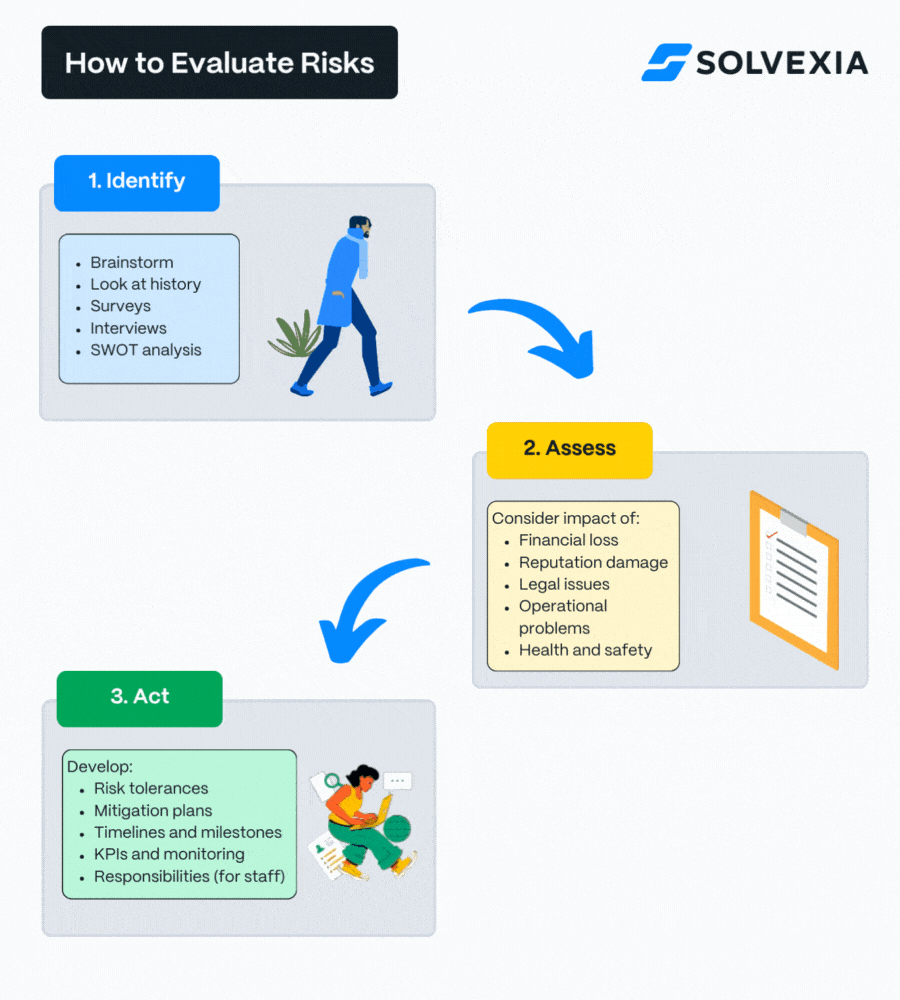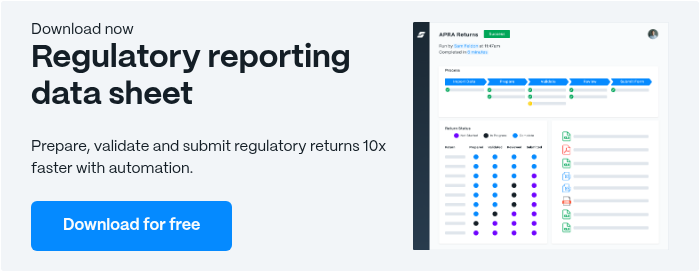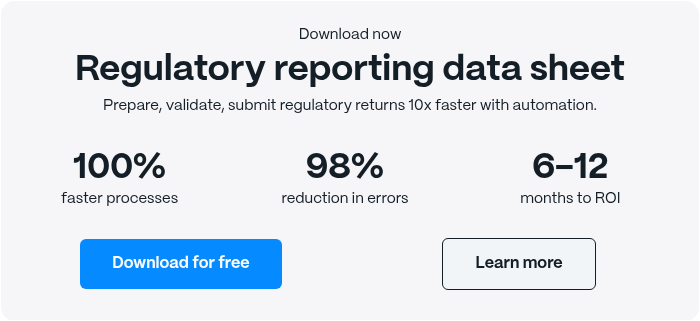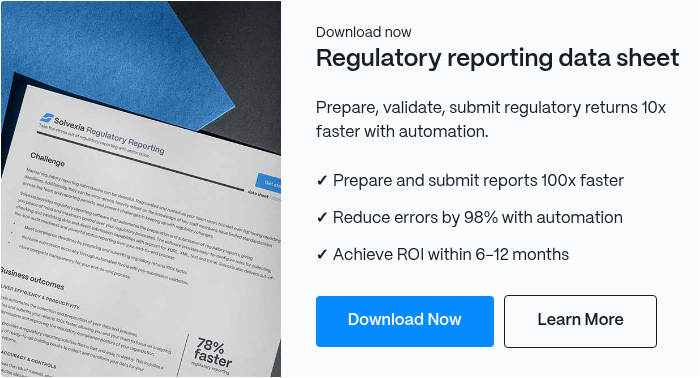Top 5 Risk Mitigation Strategies for Business Success

Effective risk mitigation strategies will help you to navigate uncertainties and achieve long-term success. This article explores five essential risk mitigation strategies to identify, assess, and mitigate potential risks, ensuring stability and growth.
Discover how risk mitigation techniques, including risk assessment and risk control, can be tailored to your specific needs. Learn best practices for effective risk management and create a framework for success.
Coming Up
What is Risk Mitigation?
Risk mitigation is a proactive approach to identifying, assessing, and addressing potential risks that could harm a business. It is a crucial component of risk management, involving the implementation of strategies to minimize the likelihood and impact of adverse events.
Techniques for risk mitigation include implementing internal controls, diversifying investments, purchasing insurance, or establishing contingency plans. For example, a company may invest in cybersecurity to protect sensitive data from breaches or develop a business continuity plan to minimize disruptions in case of a natural disaster.
Is Risk Mitigation Important?
The importance of risk mitigation lies in its ability to protect a company's assets, reputation, and financial stability. By proactively addressing risks, businesses can avoid costly disruptions, maintain customer trust, and create resilience. It also helps companies adapt to challenges and seize opportunities.
By conducting risk assessments, businesses can identify vulnerabilities in their operations, processes, and systems. This enables them to prioritize risks based on their potential severity and allocate resources effectively to mitigate them.
The Goal of Risk Mitigation
The main goal of implementing risk mitigation strategies is to minimize the potential impact of risks on a business. By identifying and addressing risks, organizations can protect their assets, reputation, and financial well-being.
The focus must be on creating a resilient and adaptable organization capable of navigating uncertainties and challenges. This is achieved by implementing preventive measures, such as employee training, process improvements, and technology upgrades.
Another goal of risk mitigation is to minimize the impact of risks that cannot be entirely avoided. This involves developing response strategies and contingency plans to ensure that the business can recover from disruptions and maintain continuity.
Objectives
The specific objectives of risk mitigation include:
- Risk Reduction: Implementing measures to decrease the likelihood of risks occurring, such as improving safety protocols, enhancing cybersecurity, or diversifying investments.
- Risk Control: Developing strategies to minimize the impact of risks that cannot be completely eliminated, such as establishing incident response plans or purchasing insurance.
- Improved Decision-Making: Providing decision-makers with the information and insights needed to make informed choices based on a comprehensive understanding of potential risks and their implications.
- Resource Optimization: Allocating resources efficiently to address the most significant risks, ensuring that the organization's efforts are focused on the areas of greatest concern.
- Enhanced Resilience: Building a resilient organization that can quickly adapt and recover from disruptions, minimizing the long-term impact of adverse events on the business.
By focusing on these objectives, risk mitigation strategies help organizations to proactively manage risks, minimize potential losses, and create a strong foundation for long-term success.
Benefits of Risk Mitigation
Implementing effective risk mitigation strategies offers several advantages. It helps organizations identify and address potential threats proactively. It enables businesses to allocate resources more efficiently, focusing on the most critical risks and opportunities. It also contributes to building a culture of resilience and adaptability.
Less Loss
One of the primary ways risk mitigation reduces potential losses is by identifying and addressing risks early on before they can escalate into major issues. By conducting thorough risk assessments and implementing targeted risk reduction strategies, businesses can minimize the likelihood of adverse events occurring in the first place. This can help prevent costly disruptions to operations, reputational damage, and financial losses.
Additionally, risk mitigation strategies often involve implementing controls and safeguards to limit the impact of risks that cannot be entirely eliminated. For example, businesses may purchase insurance policies to transfer some of the financial risks associated with property damage or liability claims. They may also establish contingency plans and backup systems to ensure continuity of operations in the event of a disruption.
More Preparation
By engaging in risk management planning, organizations can systematically identify, assess, and prioritize the risks they face. This process involves analyzing both internal and external factors that could impact the business, such as market trends, regulatory changes, technological advancements, and operational vulnerabilities.
Once risks have been identified and assessed, risk mitigation strategies focus on developing specific plans and actions to address each risk. This may involve implementing preventive measures to reduce the likelihood of the risk occurring, as well as establishing contingency plans to minimize the impact if the risk does materialize.
Moreover, risk mitigation often involves ongoing monitoring and review of risks and risk management strategies. This allows businesses to stay informed about emerging threats and adjust their risk preparedness accordingly. By fostering a culture of continuous improvement and adaptation, risk mitigation helps businesses remain resilient and agile in the face of evolving risks and uncertainties.
Added Adaptability
Risk mitigation contributes to increased business adaptability by fostering a proactive approach to managing uncertainties. By continuously monitoring and assessing risks, businesses can quickly identify changes in their internal and external environments that may impact their operations or strategies. This enables them to make timely adjustments and pivot as needed to mitigate potential threats or capitalize on new opportunities.
Effective risk mitigation strategies involve developing a range of contingency plans and response options for different risk scenarios. By having these plans in place, businesses can respond more nimbly to unexpected events or disruptions, minimizing downtime and ensuring continuity of operations. This responsive risk management approach allows organizations to maintain stability and resilience even in the face of significant challenges or changes.
In addition, risk mitigation can help businesses build a culture of adaptability and continuous learning. By encouraging employees to anticipate and proactively address risks, risk mitigation fosters a mindset of innovation and problem-solving.
Top 5 Risk Mitigation Strategies
Among the various risk mitigation strategies, five stand out. These strategies, which include risk acceptance, avoidance, mitigation, reduction, and transfer, provide businesses with a comprehensive toolkit to address the diverse risks they face.
By carefully assessing the nature and potential impact of each risk, organizations can select the most appropriate risk mitigation strategies to safeguard their interests and ensure long-term success. Let's explore each of these strategies in more detail.
Risk Acceptance
Risk acceptance is a risk management technique that involves acknowledging and accepting the potential consequences of a particular risk. This strategy is typically employed when:
- The cost of mitigating or avoiding the risk outweighs the potential benefits
- The likelihood of the risk occurring is relatively low
- The impact of the risk is deemed manageable
To effectively implement risk acceptance:
- Establish clear risk tolerance levels
- Conduct thorough risk assessments to understand potential consequences
- Monitor accepted risks regularly to ensure they remain within acceptable limits
- Have contingency plans in place to manage the impact of accepted risks
Risk Avoidance
Risk avoidance is a risk management strategy that focuses on eliminating or completely withdrawing from activities or situations that present unacceptable levels of risk. This approach is often used when:
- The potential consequences of a risk are severe
- The likelihood of occurrence is high
- The risk is deemed unmanageable or not aligned with organizational objectives
To effectively implement risk avoidance:
- Identify activities or situations that pose unacceptable risks
- Conduct cost-benefit analyses to assess the impact of avoiding certain risks
- Develop alternative strategies to achieve objectives while avoiding identified risks
- Regularly review and update risk avoidance decisions based on changing circumstances
Risk Mitigation
Risk mitigation involves taking proactive steps to reduce the likelihood or impact of identified risks. To effectively mitigate risks:
- Identify potential risk events and assess their likelihood and impact
- Develop and implement controls, procedures, and strategies to minimize risk
- Allocate resources and assign responsibilities for risk mitigation efforts
- Monitor the effectiveness of mitigation strategies and adjust as needed
Common risk mitigation strategies include:
- Implementing security measures and protocols
- Providing training and education to employees
- Establishing contingency plans and backup systems
- Diversifying investments and supply chains
Risk Reduction
Risk reduction is a risk management technique that aims to minimize the impact of risks that cannot be completely eliminated. To effectively reduce risks:
- Identify risks that cannot be fully eliminated
- Assess the potential impact of these risks on the organization
- Develop strategies to lessen the severity of potential losses or disruptions
- Implement measures to detect and respond to risk events promptly
Common risk reduction strategies include:
- Implementing early warning systems and monitoring mechanisms
- Establishing incident response and business continuity plans
- Conducting regular audits and assessments to identify vulnerabilities
- Investing in redundant systems and backup resources
Risk Transfer
Risk transfer is a risk management technique that involves shifting the potential financial consequences of a risk to another party. To effectively transfer risks:
- Identify risks that can be transferred to a third party
- Assess the costs and benefits of transferring specific risks
- Select appropriate risk transfer mechanisms, such as insurance or contracts
- Regularly review and update risk transfer arrangements to ensure adequate coverage
Common risk transfer strategies include:
- Purchasing insurance policies to cover potential losses
- Outsourcing high-risk activities to specialized service providers
- Incorporating risk-sharing clauses in contracts with suppliers or partners
- Engaging in hedging strategies to mitigate financial risks
How to Evaluate Risks

Effective risk management relies on a systematic approach to risk evaluation, which involves identifying potential risks, assessing their impact, and developing appropriate strategies to address them. By utilizing risk assessment tools and techniques, organizations can gain a clear understanding of the risks they face and make informed decisions to mitigate potential negative consequences.
Identification
Identifying potential hazards or threats is the first step in risk evaluation. Effective risk identification methods include brainstorming sessions with cross-functional teams, reviewing historical data and incident reports, conducting stakeholder surveys and interviews, performing SWOT analyses, and utilizing risk assessment templates and checklists.
To ensure comprehensive risk identification, it is essential to involve diverse perspectives from across the organization, consider both internal and external risk factors, foster open communication and information sharing, and regularly update and review the list of identified risks.
Impact Assessment
Once potential risks have been identified, the next step is to assess their impact on the organization. A thorough risk impact analysis should consider various factors, such as financial losses, reputational damage, legal and regulatory consequences, operational disruptions, and health and safety implications.
To effectively prioritize risks, organizations should develop a risk rating system based on likelihood and severity, assign numerical values to each risk factor for quantitative analysis, and consider the cumulative effect of multiple risks occurring simultaneously.
Regular reassessment of risk impact is necessary as internal and external factors change. By conducting a comprehensive risk impact analysis, organizations can better allocate resources and focus on the most significant threats to their operations and objectives.
Developing Strategies
With a clear understanding of identified risks and their potential impact, organizations can develop effective strategies to manage and mitigate these risks. The risk strategy development process should involve:
- Establishing risk tolerance levels and thresholds; and
- Identifying appropriate risk mitigation strategies for each identified risk; and
- Assigning responsibilities and resources for implementing risk management plans; and
- Setting timelines and milestones for risk management activities; and
- Defining key performance indicators (KPIs) to measure the effectiveness of risk strategies.
When developing risk management strategies, it is crucial to align strategies with organizational goals and objectives and balance the cost of risk management with the potential benefits.
Companies should incorporate contingency plans and backup measures, involve stakeholders in the strategy development process. Organisations must also review and update strategies based on changing risk profiles.
Best Practices for Risk Mitigation
Implementing effective risk management strategies is essential for organizations. To ensure the success of risk mitigation efforts, it is crucial to follow best practices that foster a proactive, collaborative, and resilient approach to managing risks.
By adhering to these best practices, organizations can create a strong foundation for identifying, assessing, and mitigating potential threats, while also cultivating a risk-aware culture that supports long-term success.
Include Everyone
One of the most critical best practices for risk mitigation is to involve all relevant stakeholders in the process. This includes employees, managers, executives, partners, and customers. By fostering a culture of team collaboration and stakeholder involvement, organizations can tap into a wealth of diverse perspectives and expertise, leading to more comprehensive risk identification and assessment.
Engaging stakeholders throughout the risk management process also promotes a sense of ownership and accountability, ensuring that everyone is invested in the success of risk mitigation efforts. Moreover, involving stakeholders helps to build trust and transparency, which are essential for effective risk communication and decision-making.
Promote a Risk-Aware Culture
Actively promoting a risk-aware culture is another key best practice for effective risk mitigation. To foster a strong organizational risk culture:
- Empower Employees: Encourage employees to identify and report potential risks without fear of retribution or blame. Create a safe and open environment that values proactive risk management.
- Lead by Example: Leaders should demonstrate a strong commitment to risk management and encourage open dialogue about potential threats and opportunities. Their actions and decisions should align with the organization's risk management goals.
- Provide Training and Awareness Programs: Regular training sessions help employees understand their roles and responsibilities in risk management. These programs should equip employees with the tools and knowledge needed to effectively identify and mitigate risks.
- Embed Risk Awareness: Integrate risk management into the fabric of the organization. Make it a part of the company culture, values, and decision-making processes.
- Foster Proactivity and Resilience: Encourage a proactive approach to risk management, where potential threats are identified and addressed before they escalate. Cultivate a resilient mindset that allows the organization to quickly adapt and recover from adverse events.
By actively promoting a risk-aware culture, companies can create a strong foundation for effective risk mitigation, ensuring that all employees are engaged and committed to managing potential threats and opportunities.
Communicate Clearly
Clear communication is a critical component of effective risk management. Organizations must establish well-defined risk communication strategies to ensure that all stakeholders have access to timely, accurate, and relevant information about potential risks and mitigation efforts. This includes developing clear protocols for reporting risks, sharing risk assessment findings, and communicating risk management decisions.
Leaders should strive to create an open and transparent communication environment that encourages feedback and dialogue, allowing for the free flow of ideas and concerns. By prioritizing clear communication, organizations can foster a shared understanding of risks and mitigation strategies, facilitate informed decision-making, and ensure that everyone is working towards common risk management goals.
Monitor Continuously
Effective risk mitigation requires ongoing monitoring and evaluation to ensure that strategies remain relevant and effective in the face of evolving risks. Organizations should establish robust risk monitoring techniques that allow them to track key risk indicators, identify emerging threats, and assess the effectiveness of existing mitigation measures. This may involve implementing advanced data analytics tools, conducting regular risk audits and assessments, and establishing early warning systems to detect potential issues before they escalate.
By continuously monitoring risks and mitigation efforts, organizations can quickly adapt to changing circumstances, refine their strategies, and ensure that resources are allocated effectively. Moreover, ongoing monitoring helps to foster a culture of continuous improvement, where lessons learned from past experiences are used to inform future risk management decisions.
Tools for Risk Mitigation
There is a wide range of risk mitigation tools available that can help streamline the risk management process, provide valuable insights, and support informed decision-making. By leveraging these tools, organizations can enhance their risk management capabilities and build a more resilient and proactive approach to managing potential threats.
Risk Mitigation Tools
There are various tools that organizations can use to support their risk mitigation efforts. Some of the most common risk management tools include risk assessment templates, which provide a structured framework for identifying and evaluating potential risks. Risk matrices are another useful tool, allowing organizations to prioritize risks based on their likelihood and potential impact.
Other risk tools include decision trees, which help to map out different risk scenarios and their potential outcomes, and risk registers, which provide a centralized repository for documenting and tracking identified risks. Additionally, many organizations use project management software and collaboration platforms to facilitate risk communication and coordination among team members.
The Use of Analytics Tools
In recent years, the use of analytics tools has become increasingly important in risk mitigation. Risk analytics software offers several key benefits:
- Data Collection and Processing: These tools help organizations collect, process, and analyze vast amounts of data related to potential risks, providing a comprehensive view of the risk landscape.
- Valuable Insights: By leveraging advanced algorithms and machine learning capabilities, risk analytics tools can identify patterns, trends, and correlations that may not be immediately apparent through manual analysis. This enables more informed decision-making.
- Anticipating Threats: With the power of analytics, organizations can gain a deeper understanding of their risk landscape and anticipate potential threats before they materialize.
- Targeted Mitigation Strategies: Insights gained from risk analytics tools allow organizations to develop more targeted and effective mitigation strategies, allocating resources where they are needed most.
- Process Automation: Risk analytics tools can help automate certain risk management processes, such as risk monitoring and reporting. This frees up valuable time and resources that can be redirected towards more strategic risk management activities.
Analytical automation tools like Solvexia helps organisations make business processes and data analytics more efficient. Being able to get deep insights, set up controls and procedures, and analyse processes with real-time dashboards means that you can alleviate the burden of the unknown, or risk.
Conclusion
As organizations navigate an increasingly complex and uncertain business landscape, effective risk mitigation has become a critical component of long-term success. By understanding the various risk mitigation strategies, tools, and best practices, companies can develop a robust and proactive approach to managing potential threats and opportunities.
Summary of Key Points
Throughout this article, we have explored the essential elements of effective risk mitigation. We began by defining risk mitigation and its importance in today's business environment. We then delved into the five key risk mitigation strategies: acceptance, avoidance, mitigation, reduction, and transfer. Each strategy offers a unique approach to managing risks based on their likelihood and potential impact.
We also discussed the risk evaluation process, which involves identifying risks, assessing their impact, and developing appropriate mitigation strategies. Best practices for risk mitigation were highlighted, including the importance of involving all stakeholders, promoting a risk-aware culture, communicating clearly, and continuously monitoring risks.
Finally, we examined the various tools available for risk mitigation, including risk assessment templates, risk matrices, and advanced analytics software. These tools can help organizations streamline their risk management processes, gain valuable insights, and make data-driven decisions.
Final Thoughts
In a rapidly evolving landscape, organizations that prioritize risk mitigation are better positioned to navigate uncertainty, seize opportunities, and achieve long-term success. By adopting a proactive and comprehensive approach to risk management, companies can build resilience, protect their assets, and create value for their stakeholders.
However, effective risk mitigation is not a one-time event but rather an ongoing process that requires continuous effort, adaptation, and improvement. Organizations must foster a culture of risk awareness, encourage open communication, and empower their employees to take an active role in identifying and managing potential threats.
As the business world continues to evolve, so too must an organization's approach to risk mitigation. By staying informed about emerging risks, leveraging advanced tools and technologies, and fostering a risk-aware culture, companies can position themselves for success in the face of uncertainty. Effective risk mitigation is not just about avoiding negative outcomes but also about seizing opportunities and creating value in a complex and ever-changing world.
FAQ
Intelligent reconciliation solution
Intelligent rebate management solution
Intelligent financial automation solution
Intelligent Financial Automation Solution
Intelligent financial automation solution
Intelligent financial automation solution
Intelligent financial automation solution
Intelligent financial automation solution
Intelligent regulatory reporting solution
Free up time and reduce errors
Recommended for you

Request a Demo
Book a 30-minute call to see how our intelligent software can give you more insights and control over your data and reporting.

Reconciliation Data Sheet
Download our data sheet to learn how to automate your reconciliations for increased accuracy, speed and control.

Regulatory Reporting Data Sheet
Download our data sheet to learn how you can prepare, validate and submit regulatory returns 10x faster with automation.

Financial Automation Data Sheet
Download our data sheet to learn how you can run your processes up to 100x faster and with 98% fewer errors.

Financial Automation Data Sheet
Download our data sheet to learn how you can run your processes up to 100x faster and with 98% fewer errors.

Financial Automation Data Sheet
Download our data sheet to learn how you can run your processes up to 100x faster and with 98% fewer errors.

Financial Automation Data Sheet
Download our data sheet to learn how you can run your processes up to 100x faster and with 98% fewer errors.

Financial Automation Data Sheet
Download our data sheet to learn how you can run your processes up to 100x faster and with 98% fewer errors.

Financial Automation Data Sheet
Download our data sheet to learn how you can run your processes up to 100x faster and with 98% fewer errors.

Rebate Management Data Sheet
Download our data sheet to learn how you can manage complex vendor and customer rebates and commission reporting at scale.

Top 10 Automation Challenges for CFOs
Learn how you can avoid and overcome the biggest challenges facing CFOs who want to automate.
.svg)









